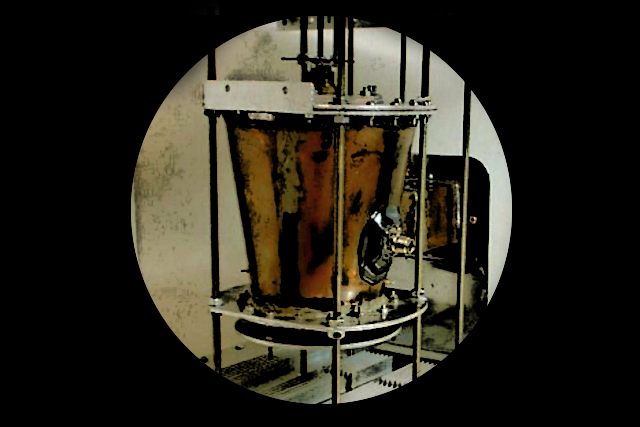The International Business Times is breathlessly reporting this week* that a paper about Robert Shawyer’s “EmDrive” (the box that supposedly produces thrust by bouncing microwaves around inside it) has passed the peer review stage in the Journal of Propulsion and Power put out by the American Institute of Aeronautics and Astronautics (AIAA). Here’s what we know and what we definitely don’t know about this story.
We got to this point in the news cycle because of comments made in a now-deleted comment over at the NASA Spaceflight Forum by one Dr. José Rodal, who’s written for NASA Spaceflight on the topic before. His now-deleted post, copied and pasted in a comment thread at reddit’s r/EmDrive community includes the following information:
- The name of the paper is supposedly “Measurement of Impulsive Thrust from a Closed Radio Frequency Cavity in Vacuum,”
- Its authors are “Harold White, Paul March, Lawrence, Vera, Sylvester, Brady and Bailey,” and
- In what might be an excerpt from the paper’s abstract, it shows that “thrust data in mode shape TM212 at less than 8106 Torr environment, from forward, reverse and null tests suggests that the system is consistently performing with a thrust to power ratio of 1.2 +/- 0.1 mN/Kw ()”.
Now, just so we’re clear, this is damn tenuous news reporting at best. This is a comment by someone “in the know” that a paper not yet made public has passed peer review. According to IFLScience (yes, this is the level of reporting, okay?) they AIAA wrote back to them when they asked, and said that the journal “has accepted for publication a paper in the area of electromagnetic propulsion […] We currently expect the paper in question to be published in December 2016.”
So take every last bit of this with a grain of salt. This is grist for the rumour mill.
But what we do know is that Harold G. “Sonny” White and his skunkworks team have been testing the EmDrive concept, and it does seem over and over to be producing the teensiest, tiniest bits of propulsive force. An absurdly small amount of force. But it’s also an unexplained absurdly small amount of propulsive force, which is likely where the publication comes in.
Basically, if they have had their results go past peer review, and they have continued to detect inexplicable forces that seem to violate Newton’s laws, then this is the next reasonable step. It’s tantamount to saying to the scientific community “okay guys, we’ve done our best, we can’t explain it — now you try.”
This is how science progresses. These are pretty smart guys, but even they would likely admit there’s something they’re probably missing. The idea that it would work at all violates the “equal and opposite reaction” law, which is so fundamental to physics that the very notion of breaking it without — and this is also really important — any idea how or why is really, really suspect. And you know they know it.
So in December, we’ll likely get a paper that says just that: we’re measuring thrust, we don’t know why, could someone verify our results please.
And if we’re really lucky, someone else will come along and try.
But for now, let’s just file this under “don’t get your hopes up.” We can put it alongside the Tabby’s Star “alien megastructure.”
For more, you can check out the first and second times I wrote about the EmDrive.
Notes
*I’m not linking to the IBTimes article because it’s a massively ad-riddled, browser-crashing mess, but you can Google it if you like.
***
Thanks for reading! Except for the very *very* occasional tip (we take Venmo now!), I only get paid in my own (and your) enthusiasm, so please like This Week In Tomorrow on Facebook, follow me on Twitter @TWITomorrow, and tell your friends about the site!
If you like our posts and want to support our site, please share it with others, on Facebook, Twitter, Reddit — anywhere you think people might want to read what we’ve written. Thanks so much for reading, and have a great week.
***
Richard Ford Burley is a human, writer, and doctoral candidate at Boston College, as well as an editor at Ledger, the first academic journal devoted to Bitcoin and other cryptocurrencies. In his spare time he writes about science, skepticism, feminism, and futurism here at This Week In Tomorrow.


One thought on “The EmDrive and Peer Review | Vol. 3 / No. 45.2”
Comments are closed.